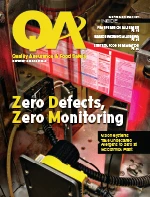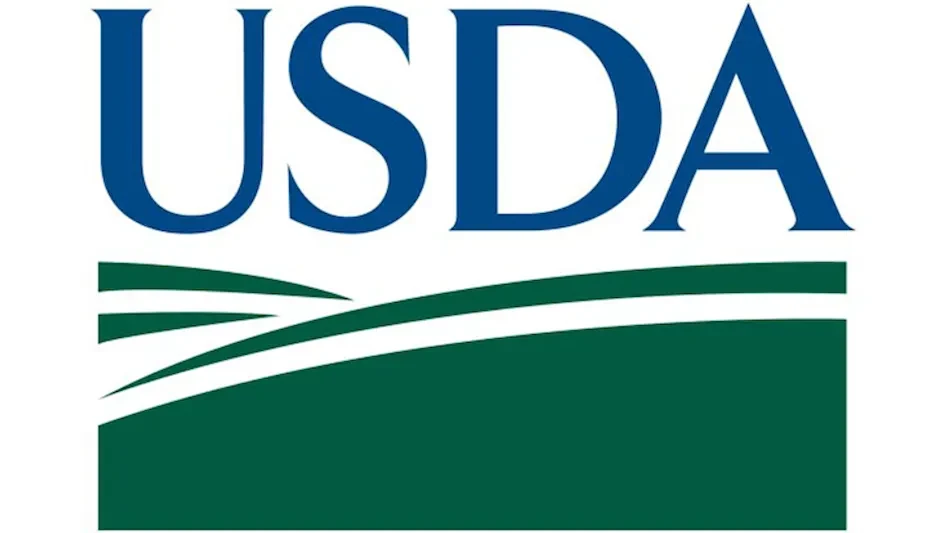“The supply chain is becoming increasingly complex which may contribute to the increase in the number of recalls. Ingredients are now sourced from all over the world and from hundreds of different suppliers, which leads to more opportunities for breakdowns in the process. I also think that there is a greater awareness today of allergens and potential allergens, which is the largest driver of recalls.” — Tim Ernst, Del Monte Foods Vice President and Associate General Counsel in response to a pre-conference question on why food recalls are becoming more common; 2011 Marcus Evans Food Safety Compliance & Risk Conference.

Following are recommendations from industry leaders and previous QA articles on preventing such undeclared, supplier-introduced allergens.
The “Best” Supplier. “High-quality suppliers not only meet the specifications for the product, they are able to readily show you that they do,” said California Natural Products Compliance Manager Bruce Ferree. “They will provide a letter of continuing guarantee, a COA with each load, and more. Suppliers willing to provide this are assuring you that they are reputable and capable.” Included in such documentation should be that of a written statement of allergens in—and not in—the product.
Additionally, Ferree recommends:
- Before purchasing, have an understanding from the supplier as to what allergens they handle. Testing results for a specific allergen could be required on a certificate of analysis (COA). Pay close attention to the allergen control section of the supplier’s certification audit.
- Consider requiring suppliers to not load two allergens onto the same trailer, but require separate deliveries. Some suppliers already do this.
- Ask suppliers to “color code” different allergens so your team can identify them easily, e.g., peanut butter gets a green pail or label, almond butter gets a red pail or label, etc.
- For bulk loads of dry materials, don’t trust the supplier. Have a testing program for product samples and a wash verification program for your receiving personnel.
- For bulk liquids, require deliveries of different products to be at specific times—completely separating the receiving times. For example, eggs can only be delivered between 4:00 and 6:00 a.m., milk between 10:00 a.m. and midnight, etc.
- Ensure warehouse receivers are well trained, including recognition of allergens, knowledge of how to deal with damages and unclean trailers, understanding of proper storage (allergens on bottom of racks/stacks only), comprehension of proper procedures for clean up of spills, etc.
Delivery and Storage. It’s not just about where the ingredients and supplies come from, but also what happens with them once they arrive at the plant. Abbott Nutrition Director of Quality Bradd Eldridge provides recommendations for allergen-contact prevention in this phase of the process:
- Have a training program for managing allergens for all employees associated with handling ingredients, finish products, and packing materials.
- Verify that transportation vessels and receipt of ingredients are void of contamination opportunities.
- Clearly identify ingredients, and store them in a manner that prevents cross contamination.
- Ensure adequate ventilation to remove gross airborne particulates within the ingredient weighing and handling areas.
- Assure ingredient packaging exterior surfaces are free of dirt, dust, and extraneous matter when transported to and from ingredient-weighing/product-processing areas.
- Develop manufacturing schedules that minimize the potential of allergen cross contamination.
- Have procedures for cleaning of ingredient weighing and dispensing utensils, and processing and filling equipment, and verify documentation confirming effective cleaning.
- Ensure that storage and distribution of finished goods are handled in a manner to avoid allergen contamination.
Recordkeeping. Thorough documentation and recordkeeping is critical to any supplier management program. Bobby Love, director of global quality assurance for Phillips Foods, makes the following recommendations:
• Central Allergen Identification. Create an electronic sheet in a program such as Excel, Access, Sharepoint, or other data application on which to list all ingredients by supplier and all products processed that may be categorized by allergen. With this, you can sort by the listed allergen columns to allow a rapid view of all suppliers’ ingredients/components; finished products and equipment utilized; storage areas or process rooms, etc. This will allow rapid identification of all categories by that allergen. This may be a basic Excel spreadsheet or a sophisticated program (such as Sharepoint) that can also store each supplier’s specification sheet per ingredient. Then make annual updates on all components through program-generated notifications with multiple levels of alerts in a sophisticated data program or, in a simpler application, by reviewing the chart or column that lists annual review dates and documents.
• Change Management Program. Create a program for submitting change requests that ensures that each task associated with labels, documentation, HACCP, etc., is changed in accordance with an initiated change. Again, a computer-generated program is most effective; an Excel listing or even a diagram may be used, but more manual work means more possibility of a task not being performed every time. You can also use a program or person that sends emails to those responsible and tracks their completion for the many aspects of labeling, formulation, monitoring, SOPs, sanitation, HACCP, package prints, nutritional ingredient decks, etc. Each time a change is requested for any product—including but not limited to ingredient, process, equipment, location, amounts, monitoring documents, CCPs etc.—each component of the labeling process may be held accountable to respond to updating of the change that was made. In many operations, I see this as being a major risk for documents not being kept current on allergen and other food safety/HACCP details. It is a large opening for error.
• Consistent Color Coding. When color coding for allergens, it is judicious to develop a consistent color chart. I had hoped that industry or academia would suggest a color assignment chart for allergen color coding for the food industry as a whole, but a proprietary program can suit the needs of an individual processor, as long as it is consistent. For example:
– For incoming goods, processors could request supplier labels be in alignment with the processor’s allergen color coding when possible. OR have the receiver place proprietary colored labels per allergen, with the allergen name in bold, on each incoming container or package. Finished product may have the label applied to the package.
– The same consistent color coding may expand into color-coded gowns, hairnets, utensils, and implements.
– It may also expand into traffic and facility diagrams/maps for process facility/storage/routes for staff allergen identification, ingredients, product WIP, ingredient/finish product storage, etc. (Remember to never store allergens above other allergens or non-allergens.)
• Resources. A few helpful resources I would recommend include:
– FDA’s Food Allergen Partnership document (www.fda.gov/Food/LabelingNutrition/FoodAllergensLabeling/GuidanceComplianceRegulatoryInformation/ucm106779.htm)
– Components of an Effective Allergen Control Plan: A Framework for Food Processors from FAARP and University of Nebraska. Although published in 2008, the article still provides good information for today’s processors. (Available at www.qualityassurancemag.com, Online Extras).
– There are many more great resources, continuing education courses, and seminars available through industry associations, consulting groups, and government agencies.
FSMA. Hazard, or risk, assessment is critical for consumer and brand protection. As such, it is a key aspect of the preventive provisions of the Food Safety Modernization Act (FSMA). In fact, the pending rule, Hazard Analysis and Risk-Based Preventive Controls (Section 103) focuses directly on this area—and specifically includes allergens as a hazard.
For all hazards identified, preventive controls will need to be identified and implemented to assure that all are significantly minimized or prevented and the food produced by a facility is not adulterated or misbranded. Implementing—and continuously evaluating and improving—such assessment and prevention plans are important, not only within your plant, but throughout your supply chain.
Facilities will also need to have broad prerequisite programs in place similar to Good Manufacturing Practices (GMPs), which may include programs for sanitation; supervisor, manager, and employee hygiene training; environmental-monitoring verification; food allergen control; recalls; and supplier verification. (Don’t Let FSMA Delays Hold You Back, David Acheson, QA October 2012.)
Counterfeiting. Counterfeiting can be the unauthorized production, over-run or diversion of goods; simulated products; intellectual property theft of trademark, patent, copyright or trade secrets or processes; or other tampering or fraud. Acts specific to food include product substitution, up-labeling, label adulteration, origin relabeling, copy or unauthorized refill, or “freshening.”
In addition to production of fraudulent product sold under an established brand name, product fraud can occur in a supply chain. For example, a company hired to destroy an expired product may instead alter the expiration label, then sell the product at a discount market.
A food producer faces particular risk when fraudulent products are sold under its brand name, with potential food safety risks including production without the use of GMPs and the introduction of undeclared allergens, pathogens, poison or harmful chemicals, inactive ingredients, or preservatives. (Food Fakery, QA, October 2008)
Labels. As noted in this issue’s cover story, the printing and packing of the labels themselves can be an issue, particularly when multiple products are printed on a single sheet and then cut apart. Mistakes can be made at the printer’s facility or in changeover at the plant. McCormick has reduced potential error with vision equipment. Although it does not require it of suppliers, some have begun putting the systems on their lines as well.
Global Prevention. In McCormick Spices: A History of Global Sourcing for America’s Kitchens (June, 2010), Corporate Vice President of Quality Assurance and Regulatory Roger Lawrence explained that among the company’s preventive Global Sourcing Program requirements is one for written supplier quality expectations, provided in a guidebook and including all applicable U.S. regulations, HACCP, pest control, sanitation, allergen management, traceability, etc. Guidelines detail testing requirements to include chemical, physical, microbial, and microsanitary testing and validation.
“Safe food starts with safe ingredients,” Lawrence said. “We use a preventive approach, and you can only do that by going upstream in the supply chain. If you don’t do that, it is intervention, not prevention.”
The author is Editor of QA magazine. She can be reached at llupo@gie.net.

Explore the December 2012 Issue
Check out more from this issue and find your next story to read.
Latest from Quality Assurance & Food Safety
- Bird Flu: What FSQA Professionals Need to Know
- Registration Open for 129th AFDO Annual Educational Conference
- Frank Yiannas, Aquatiq Partner to Expand Global Reach of Food Safety Culture
- World Food Safety Day 2025 Theme: Science in Action
- Ancera Launches Poultry Analytics System
- USDA Terminates Two Longstanding Food Safety Advisory Committees
- Catalyst Food Leaders Announces Virtual Leadership Summit for People in Food
- Food Safety Latam Summit 2025 Set for Mexico City





